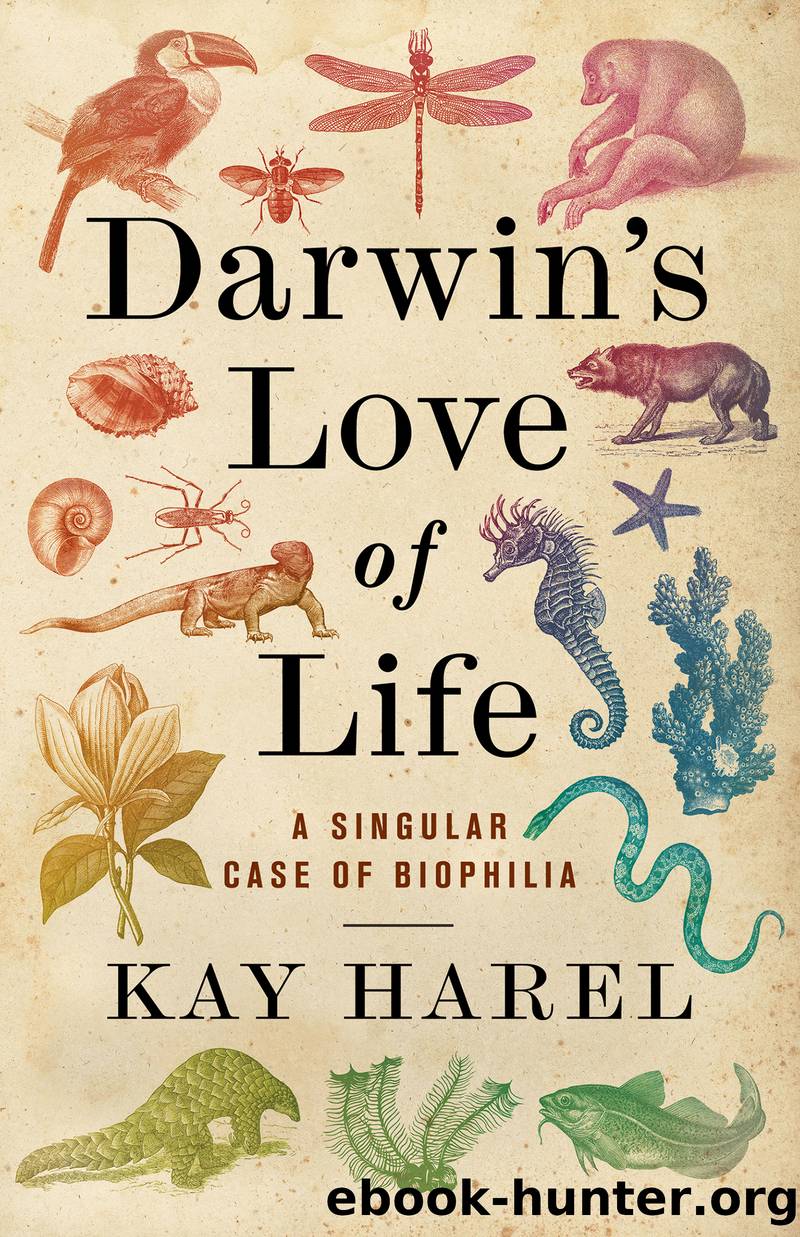Darwin's Love of Life by Karen L. Harel

Author:Karen L. Harel
Language: eng
Format: epub
Publisher: Columbia University Press
A NOTE FOR THE ANNALS OF ANTHROPOMORPHISM
In studying emotional commonalities, Darwin used âhis usual process of empathy and identification,â as Hyman described it, and manifested an âaffiliation with life,â to return to Wilsonâs definition. Darwin felt organized beingsâ inner lives, their drives, and the logic of their actions, whether those organized beings were human or otherwise. His granddaughter noted that âhis sympathetic participation in the lives of the creatures he observed helped him to understand their habits.â So it happens that he exhorted us: âWith respect to female birds feeling a preference for particular males we must bear in mind that we can judge of choice being exerted, only by placing ourselves in the same position.â Say what? Walk a mile in the shoes of a female bird deciding with whom to mate? Think what a bird thinks? What kind of person could think this is not merely a wild flight of fancy? Someone who often takes such leaps (see chapter 3).
Darwin wrote anthropomorphically because his theory pushed him to think anthropomorphically. In a complement to the rigor of his taxonomic work and as a testament to the diversity of his modes of inquiry, he conducted empathetic thought experiments, for example, when he speaks for the thoughts of a female bird or of a dog, when he imagines the reasons for the actions of Drosera, a bee, a chimpanzee, and so many others. He commented in his travelogue that one night in South America he could not eat his dinner because he could hear his horse gnawing at its post and knew it was hungry.
In Darwinâs day, natural philosophers and scientists stigmatized anthropomorphism. Darwinâs exposed him to much criticism and contributed to his disrepute. But, again, yesterdayâs discreditable anthropomorphism is todayâs anecdotal cognitivism. Darwin knew in his bones that we share feelings with animals. He once emphasized in a notebook: âAnimalsâwhom we have made our slaves we do not like to consider our equals.âDo not slave-holders wish to make the black man other kind?âAnimals with affections, imitation, fear of death, pain, sorrow for the deadârespect.â
For Darwin, animals were brethren, as in: âIf we choose to let conjecture run wild, then animals, our fellow brethren in pain, disease, death & suffering; our slaves in the most laborious work, our companion in our amusements ⦠from our origin in one common ancestor, we may all be netted together.â The modern primatologist Frans de Waal, who studies culture in animals, comments that âanthropomorphism acknowledges continuity between humans and animalsâ and is âpart and parcel of the way the human mind works.â This aspect of Homo sapiens may have been complete heresy in Darwinâs day, but it was A-B-C to de Waal and a quintessential aspect of the biophilia that Wilson describes as being at one with all of life.
So in the context of biophilia, Darwinâs anthropomorphism accords his sense of commonality, of the one living spirit. The way he wrote The Descent of Man, as the Darwin scholar Will Durant has noted, was
Download
This site does not store any files on its server. We only index and link to content provided by other sites. Please contact the content providers to delete copyright contents if any and email us, we'll remove relevant links or contents immediately.
The Lonely City by Olivia Laing(4750)
Animal Frequency by Melissa Alvarez(4395)
All Creatures Great and Small by James Herriot(4233)
Walking by Henry David Thoreau(3894)
Exit West by Mohsin Hamid(3778)
Origin Story: A Big History of Everything by David Christian(3649)
COSMOS by Carl Sagan(3554)
How to Read Water: Clues and Patterns from Puddles to the Sea (Natural Navigation) by Tristan Gooley(3409)
Hedgerow by John Wright(3276)
The Inner Life of Animals by Peter Wohlleben(3259)
How to Read Nature by Tristan Gooley(3249)
How to Do Nothing by Jenny Odell(3232)
Project Animal Farm: An Accidental Journey into the Secret World of Farming and the Truth About Our Food by Sonia Faruqi(3178)
Origin Story by David Christian(3148)
Water by Ian Miller(3128)
A Forest Journey by John Perlin(3027)
The Plant Messiah by Carlos Magdalena(2883)
A Wilder Time by William E. Glassley(2818)
Forests: A Very Short Introduction by Jaboury Ghazoul(2790)
